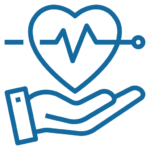Enlightened Growth Leadership Best Practices Recognition, 2024
The 2024 Enlightened Growth Le...
22 January, 2025
The COVID-19pandemic painted a clear picture of where the world stands in terms of healthcare. Essential healthcare is a fundamental right, yet many people still lack it due to inadequate public spending on healthcare infrastructure or the poor quality of existing services. Achieving universal health coverage by 2030 will require strong collaboration between the government, international partners, and the private sector to improve existing facilities, finance the system, and provide an adequate health workforce. At FSI, we believe that it’s more urgent than ever to commit to improving healthcare access and affordability, given the health crises we face, from climate-linked disasters to environmental pollution.
The 2024 Enlightened Growth Le...
22 January, 2025A group of dedicated volunteer...
18 December, 2023The Frost & Sullivan Insti...
18 December, 2023Spreading happiness this holid...
10 November, 2023Your contribution can change & touch many lives

